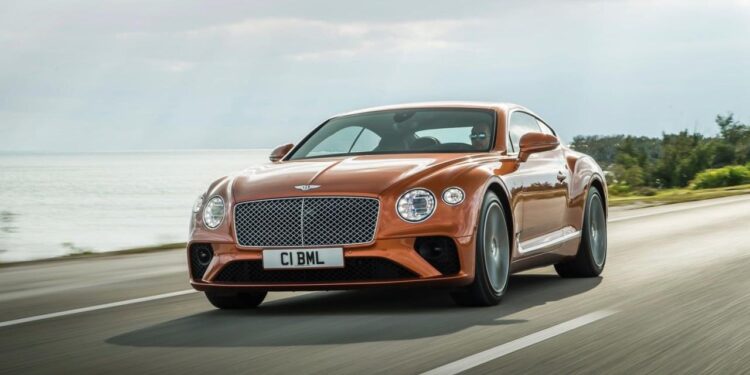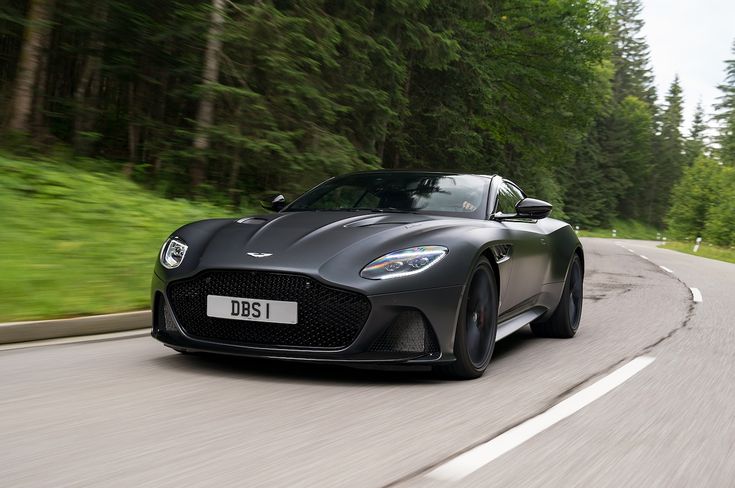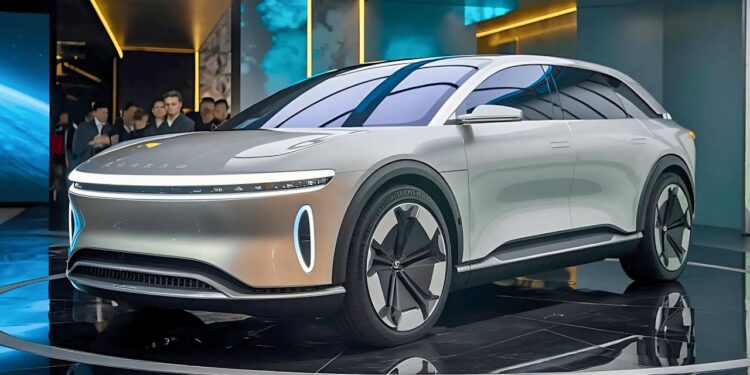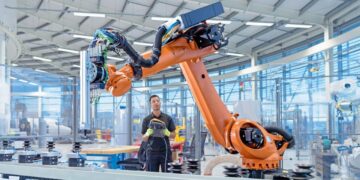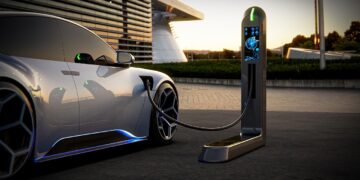In today’s dynamic automotive landscape, luxury car trends are not just a statement of opulence—they serve as powerful catalysts that shape market competition and drive innovation across the industry. The high-end automotive market has always been a playground for manufacturers aiming to combine performance, technology, and design in ways that captivate the most discerning consumers. With rapid advancements in technology and evolving consumer expectations, luxury car trends have become central to determining market dynamics and competitive positioning.
This article delves into the latest trends within the luxury car segment, exploring how innovations in design, performance, sustainability, and technology are influencing competitive strategies among manufacturers. We also examine how consumer preferences and global economic factors are driving this market forward. Throughout this article, we will provide in-depth analysis, detailed lists, and comprehensive insights to help readers understand the complex interplay between luxury car trends and market competition.
The Evolution of Luxury Cars
Luxury vehicles have come a long way from being mere symbols of wealth. Historically, these cars were built with a focus on comfort and style, often featuring lavish interiors and handcrafted details. Today, the luxury automotive segment is defined by a fusion of cutting-edge technology, performance enhancements, and eco-friendly solutions, all wrapped in elegant design.
Manufacturers are investing heavily in research and development to integrate innovative features that cater to an increasingly sophisticated clientele. As a result, the market has witnessed a significant transformation where technological prowess and sustainable practices are just as important as traditional markers of luxury.
A. Historical Perspective
Luxury cars once symbolized a bygone era of exclusivity and craftsmanship. The early luxury models emphasized:
A. Artisanal Craftsmanship: Hand-finished details, premium materials, and bespoke options defined the early era of luxury automobiles.
B. Performance and Prestige: Engines were powerful and designed to deliver a thrilling driving experience, while the exclusivity of owning such a vehicle was a status symbol.
C. Limited Production: Luxury cars were produced in limited numbers, increasing their allure and making them a coveted commodity among the elite.
B. Modern-Day Transformation
Fast forward to the present, and the landscape of luxury cars has evolved dramatically. Manufacturers now focus on:
A. Advanced Technology Integration: Infotainment systems, AI-assisted driving, and connectivity features are now common.
B. Sustainable Practices: Electric drivetrains, hybrid systems, and the use of recyclable materials are pushing the industry toward a greener future.
C. Customization and Personalization: From interior trims to bespoke color schemes, customization options allow customers to tailor their vehicles to their specific tastes.
D. Performance and Efficiency: The new generation of luxury cars combines high performance with fuel efficiency and reduced emissions, meeting both thrill-seeking and environmentally conscious demands.
Market Competition in the Luxury Car Sector
The luxury car market is fiercely competitive, with manufacturers continually striving to outdo each other through innovation and strategic positioning. As the industry evolves, several key factors have emerged as critical drivers of competition.
A. Innovation and Technology
Innovation remains at the heart of competition in the luxury car market. Manufacturers invest significant resources in developing state-of-the-art features that set their vehicles apart. Current technological trends include:
A. Autonomous Driving Systems: Advanced driver assistance systems (ADAS) and semi-autonomous features are becoming standard in luxury models.
B. Connectivity and Infotainment: Integrated digital ecosystems that provide seamless connectivity with smartphones and smart home devices.
C. Electric and Hybrid Powertrains: With growing environmental concerns, manufacturers are increasingly focusing on electrification and hybrid technologies to offer cleaner, more efficient vehicles.
D. Augmented Reality Dashboards: Innovative digital interfaces that provide real-time information and enhance the driving experience.
B. Design and Aesthetics
The design of a luxury car is a critical factor that influences consumer perception and market positioning. Modern luxury vehicles are characterized by:
A. Sleek, Aerodynamic Lines: A focus on both aesthetics and performance through aerodynamic designs that enhance fuel efficiency and stability.
B. Premium Materials: Use of high-quality materials such as genuine leather, carbon fiber, and advanced composites to create a sense of luxury and durability.
C. Ergonomic Interiors: Thoughtfully designed interiors that offer maximum comfort and convenience through ergonomic seating and intuitive controls.
C. Brand Heritage and Loyalty
Brand identity plays a vital role in the luxury segment. Iconic brands leverage their heritage to instill trust and loyalty among customers. This involves:
A. Legacy of Excellence: Established manufacturers often capitalize on decades of innovation and craftsmanship to position themselves as leaders in the market.
B. Customer Experience: Superior service, exclusive ownership experiences, and personalized customer care contribute to lasting brand loyalty.
C. Exclusivity: Limited editions and bespoke options reinforce a brand’s status as a purveyor of luxury and exclusivity.
D. Economic and Global Influences
Global economic trends also shape market competition within the luxury car sector. Factors such as consumer spending, economic policies, and international trade agreements can significantly impact demand. Key economic influences include:
A. Economic Stability: Consumer confidence and spending power often dictate the luxury car market’s performance.
B. Currency Fluctuations: Exchange rate variations can affect pricing and profitability, particularly for brands operating in multiple regions.
C. Regulatory Environment: Emissions regulations and safety standards drive innovation while simultaneously increasing production costs.
Detailed Analysis of Current Luxury Car Trends
To understand how luxury car trends are driving market competition, it is essential to explore the current developments in the industry. Below, we provide a detailed analysis of some of the most influential trends.
A. Electrification and Sustainability
Sustainability is no longer an option but a mandate in the automotive industry. Luxury car manufacturers are at the forefront of this shift, integrating eco-friendly technologies without compromising on performance or style.
-
Electric Vehicles (EVs):
- Many luxury brands are launching premium electric models that offer zero emissions, superior acceleration, and advanced battery technology.
- High-performance EVs are designed to challenge traditional internal combustion engines while delivering a quiet, refined driving experience.
-
Hybrid Technologies:
- Hybrid systems combine the benefits of traditional combustion engines with electric power, providing a balanced approach to performance and efficiency.
- These systems are especially popular in regions where the infrastructure for fully electric vehicles is still developing.
-
Sustainable Materials:
- Manufacturers are increasingly using recycled and sustainable materials in vehicle construction.
- Interior elements, such as eco-friendly leather alternatives and natural fibers, are becoming standard in luxury models.
B. Advanced Driver Assistance Systems (ADAS) and Autonomous Features
Safety and convenience are paramount in the luxury car segment. Innovations in ADAS and autonomous driving technologies are transforming how luxury vehicles operate, making them safer and more efficient.
-
Adaptive Cruise Control:
- This feature uses sensors and cameras to maintain a safe distance from other vehicles, adjusting speed automatically based on traffic conditions.
-
Lane-Keeping Assist:
- Advanced sensors monitor road markings and ensure the vehicle stays within its lane, reducing the risk of collisions.
-
Self-Parking Systems:
- Automated parking systems relieve drivers of the stress associated with finding and maneuvering into parking spaces.
- These systems use ultrasonic sensors and AI to navigate tight spaces safely.
-
Fully Autonomous Capabilities:
- While full self-driving technology is still in its developmental stages, luxury manufacturers are investing in research to bring autonomous driving to market.
- Semi-autonomous features are already enhancing safety and convenience on highways and in urban settings.
C. Integration of Artificial Intelligence and Machine Learning
AI and ML are revolutionizing the automotive industry by enhancing vehicle performance, safety, and user experience. In luxury cars, these technologies are implemented in various aspects:
- Predictive Maintenance:
- AI systems analyze vehicle performance data to predict when maintenance is needed, reducing downtime and preventing costly repairs.
- Personalized Driving Experience:
- Machine learning algorithms adapt to driver preferences, adjusting settings such as seat position, climate control, and infotainment options automatically.
- Enhanced Navigation:
- AI-powered navigation systems provide real-time traffic updates, route optimization, and even suggest scenic routes for leisure drives.
- Voice and Gesture Controls:
- Natural language processing and gesture recognition allow drivers to interact with their vehicles effortlessly, enhancing the overall driving experience.
D. Customization and Bespoke Options
Personalization is a significant trend in the luxury car market. Consumers expect their vehicles to reflect their unique tastes and lifestyles. Luxury car manufacturers are responding by offering an array of customizable options:
- Interior Finishes:
- Customers can choose from a wide range of materials, colors, and textures to design an interior that suits their style.
- Exterior Options:
- Bespoke paint jobs, custom wheels, and unique trim options allow buyers to stand out on the road.
- Technology Packages:
- Advanced infotainment, premium sound systems, and integrated connectivity options can be tailored to individual preferences.
- Exclusive Editions:
- Limited-edition models with unique features and designs create a sense of exclusivity and urgency among potential buyers.
Competitive Strategies in the Luxury Car Market
The fierce competition among luxury car manufacturers is driving them to adopt innovative strategies that not only highlight their unique strengths but also set new industry benchmarks. Below, we explore some of the key competitive strategies being employed.
A. Strategic Partnerships and Collaborations
To accelerate innovation and expand market reach, many luxury car brands are entering into strategic partnerships. These collaborations often involve technology firms, design houses, and even non-automotive companies. Some common partnership strategies include:
A. Technology Integration:
- Collaborating with tech giants to integrate the latest AI, ML, and connectivity solutions.
B. Joint Ventures: - Forming alliances to co-develop electric or autonomous vehicle platforms.
C. Co-Branding Initiatives: - Partnering with luxury lifestyle brands to enhance the overall brand experience and appeal to affluent consumers.
B. Investment in Research and Development
Continuous innovation is crucial in maintaining a competitive edge. Manufacturers allocate substantial budgets to R&D in order to:
A. Develop Next-Generation Technologies:
- Investing in breakthroughs such as quantum computing applications in vehicle systems and advanced materials for improved performance.
B. Improve Sustainability: - Researching eco-friendly production methods and alternative energy solutions to meet stricter environmental regulations.
C. Enhance Safety Features: - Pioneering innovations in driver assistance and autonomous driving to set new safety standards in the luxury segment.
C. Enhancing Customer Experience
Luxury car brands understand that exceptional customer experience is vital for building loyalty and sustaining market leadership. Strategies in this area include:
A. Personalized Services:
- Offering bespoke design consultations and customizations tailored to individual preferences.
B. Exclusive Ownership Programs: - Providing VIP services such as dedicated concierge support, exclusive events, and premium maintenance packages.
C. Digital Engagement: - Leveraging online platforms and virtual showrooms to engage with tech-savvy customers and create immersive buying experiences.
D. Expanding Global Presence
As consumer demand grows in emerging markets, luxury car manufacturers are increasingly focused on expanding their international footprint. Tactics include:
A. Localized Marketing:
- Tailoring marketing campaigns to resonate with cultural nuances and consumer behaviors in different regions.
B. Strategic Dealership Networks: - Establishing flagship showrooms and service centers in key cities worldwide to enhance brand visibility and customer accessibility.
C. Export and Trade Initiatives: - Engaging in trade agreements and international collaborations to streamline the distribution of luxury vehicles globally.
The Impact of Digital Transformation
Digital transformation has dramatically altered the landscape of the luxury car market. The integration of digital tools, online marketing, and e-commerce strategies is redefining how brands interact with customers and position themselves competitively.
A. Online Showrooms and Virtual Reality
The advent of online showrooms has made it possible for luxury car buyers to explore vehicles from the comfort of their homes. Virtual reality (VR) and augmented reality (AR) technologies enhance this experience by allowing potential customers to take virtual tours, customize their vehicles in real time, and even simulate test drives. These digital tools:
A. Increase Accessibility:
- Enable global customers to experience a vehicle without the need for physical dealership visits.
B. Enhance Engagement: - Provide interactive and immersive experiences that elevate the overall buying process.
C. Streamline Sales: - Facilitate online transactions and reduce the time between inquiry and purchase.
B. Social Media and Influencer Marketing
Social media platforms have become powerful channels for luxury car brands to engage with consumers and build brand awareness. Strategic collaborations with influencers and targeted digital marketing campaigns are integral to:
A. Building Brand Identity:
- Curating a compelling brand narrative that resonates with a diverse, global audience.
B. Driving Customer Engagement: - Encouraging interaction through visually appealing content, live events, and interactive posts.
C. Boosting Conversions: - Utilizing data analytics to target high-value prospects and convert online engagement into sales.
C. Data Analytics and Consumer Insights
Big data and analytics provide luxury car manufacturers with critical insights into consumer behavior. By analyzing purchasing patterns, online engagement, and market trends, brands can tailor their products and marketing strategies to better meet the needs of their target audience. This data-driven approach enables:
A. Personalized Marketing:
- Crafting customized messages and offers based on individual consumer profiles.
B. Optimized Inventory Management: - Forecasting demand and adjusting production schedules to align with market trends.
C. Enhanced Product Development: - Leveraging consumer feedback to innovate and refine vehicle features.
Future Outlook for the Luxury Car Market
Looking ahead, the luxury car market is poised for further transformation as emerging trends continue to reshape the industry. Manufacturers must be agile and forward-thinking to stay competitive in a rapidly evolving landscape.
A. Advancements in Electric Mobility
The shift toward electric vehicles (EVs) is accelerating. As battery technology improves and charging infrastructure expands, luxury brands will increasingly offer fully electric models that combine performance with sustainability. Key developments to watch include:
A. Longer Range EVs:
- Breakthroughs in battery efficiency that extend driving range without compromising on luxury or performance.
B. Faster Charging Solutions: - Innovations that reduce charging times, making electric luxury cars more practical for everyday use.
C. Integration with Renewable Energy: - Partnerships with energy providers to offer solutions that integrate solar or wind energy, further enhancing the eco-friendly appeal of luxury EVs.
B. Autonomous Driving and Enhanced Safety
The evolution of autonomous driving technology will continue to be a major factor in the luxury car segment. Future models are expected to offer:
A. Fully Autonomous Capabilities:
- The gradual introduction of fully self-driving features that enhance safety and convenience.
B. Predictive Safety Systems: - AI-driven systems that anticipate potential hazards and take proactive measures to avoid accidents.
C. Enhanced Passenger Comfort: - Redesigning vehicle interiors to prioritize relaxation and productivity during autonomous driving phases.
C. Continued Emphasis on Sustainability
As environmental concerns grow, sustainability will remain a core focus in the luxury automotive sector. Manufacturers are expected to:
A. Adopt Greener Production Methods:
- Implementing eco-friendly manufacturing practices that reduce waste and carbon emissions.
B. Utilize Sustainable Materials: - Increasing the use of renewable and recyclable materials in both the exterior and interior of vehicles.
C. Promote Green Mobility Solutions: - Launching initiatives and partnerships aimed at promoting sustainable transportation options.
Conclusion
The luxury car market is undergoing a period of profound transformation driven by evolving trends, technological innovation, and shifting consumer expectations. From electrification and autonomous driving to advanced customization and digital transformation, luxury car trends are fueling intense market competition. Manufacturers are not only competing on the basis of traditional performance and design but are also investing heavily in sustainability, digital innovation, and customer experience to capture a larger share of the market.
As the industry continues to evolve, the interplay between technology and design will become increasingly crucial. Brands that can successfully merge innovative features with a legacy of craftsmanship will set new standards in the luxury segment. Meanwhile, the global competitive landscape will be defined by those who can navigate economic uncertainties, regulatory challenges, and rapidly changing consumer preferences.
In summary, luxury car trends are more than just a reflection of aesthetic preferences—they are key drivers of market competition that compel manufacturers to innovate, adapt, and excel. As we move forward, the industry is poised to witness further breakthroughs that will redefine what it means to drive luxury. For consumers, this means access to vehicles that are not only symbols of status and elegance but also embodiments of the latest technological advancements and sustainable practices.

